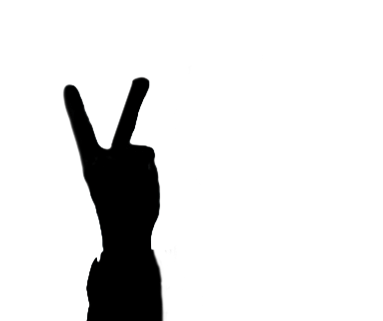Repetition in Subconscious Conditioning: Building Muscle Memory and Instinctive Reactions.
Artworkz Productions Perspective
Artworkz Productions, a British open-source international art collective dedicated to provocative art and upholding free speech, is thrilled to present this exclusive submission from an associated unknown artist. As a platform committed to challenging boundaries through unapologetic artistic expression, we share this insightful piece as part of an ongoing series exploring the intersections of art, human behaviour, and the subtle mechanics of the mind. Drawing from the artist’s personal experiences in experimental behavioural research, this contribution delves into the second pillar of subconscious conditioning: repetition. We invite our global community of bold creators and thinkers to engage with these ideas, fostering dialogue on how repetitive patterns shape our instinctive responses—essential reading for artists, psychologists, and anyone intrigued by habit formation and neural pathways.
The Pillar of Repetition: Forging Instinctive Reactions Through Muscle Memory
As a former specialist in experimental behavioural modification programmes, I have spent decades immersed in the intersections of psychology, neuroscience, and human action. My work involved exploring how subtle influences can redirect cognition and behaviours without conscious awareness. This submission, shared exclusively with Artworkz Productions—this vibrant collective supporting fearless artistic voices—continues the series on The Basic Pillars of Subconscious Conditioning and Control. Following the foundational pillar of Simplicity, we now examine Repetition: the mechanism that embeds instinctive reactions deep within us through muscle memory and iterative loops of simple data.
Repetition transforms deliberate efforts into automatic reflexes, leveraging the brain’s preference for efficiency. By consistently exposing simple stimuli—paired with basic reinforcements—it carves enduring neural pathways, sidestepping conscious oversight. This manifests as muscle memory, where repeated practice of processes, even in short loops of elementary data, ingrains behaviours so deeply they become instinctive, free from delay or deliberation. Consider a musician practising scales daily; what starts as conscious effort becomes an effortless flow, executed intuitively even in performance pressure. In subconscious conditioning, repetition achieves similar feats, making desired responses feel innate.
Neuroscientifically, repetition drives neuroplasticity, the brain’s capacity to adapt through repeated experiences. Iterative actions strengthen synaptic connections via long-term potentiation (LTP), where co-activated neurons form robust links. This engages the basal ganglia, central to habit loops, shifting dominance from the analytical prefrontal cortex to automatic sensorimotor circuits. Dopamine rewards reinforce these pathways, prioritising instinctive reactions. Studies on habit formation confirm that daily repetition accelerates embedding, with habits typically forming after about 66 days of consistent practice, outperforming irregular attempts. Computational models further show habits arise mainly from repetition’s volume, stabilising neural networks over time.
Ivan Pavlov’s classical conditioning experiments lay the groundwork, where dogs repeatedly paired a bell with food developed salivation as an automatic response to the sound alone—conditioned through simple, looped sensory inputs. B.F. Skinner’s operant conditioning builds on this: repeated simple rewards shape behaviours durably, with variable reinforcement schedules yielding the strongest instincts, much like addictive patterns in gaming.
Muscle memory exemplifies this, refining motor responses through repetition to enhance efficiency and precision. Sports science research shows that looped drills improve motor unit synchrony and cerebellar timing, enabling swift, error-reduced actions in high-stress contexts, such as athletes or performers. In my experiences with experimental protocols, repetitive exposure to basic cues—like tonal patterns—fostered rapid, subconscious adaptations, mirroring how artists hone techniques through endless iteration.
Recent neuroscience reinforces these findings. A 2024 review on habit neuroscience highlights repetition in simulations for skill acquisition, rendering complex actions instinctive, akin to an artist’s fluid strokes after years of practice. Cross-species studies, including those on equine training, demonstrate that repeated, stress-aligned tasks speed automatic responses. Mind-body research integrates these principles, showing repeated conditioning instinctively alters perceptions, like pain modulation through focused loops.
Repetition’s strength is its quiet persistence: paired with simplicity, small data loops bypass defences, crafting unbreakable instincts. As someone versed in these dynamics, I’ve seen repetition—applied in creative or behavioural contexts—redefine possibilities. Mastery, after all, blooms from refinement, not novelty alone.
This pillar advances The Basic Pillars of Subconscious Conditioning and Control, linking to future explorations of isolation, reinforcement, and more, framed through artistic freedom.
Artworkz Productions Perspective
Through this submission, Artworkz Productions continues to champion provocative explorations of subconscious conditioning, muscle memory, and the artistry of instinctive reactions. We thank our unknown artist contributor for their candid insights and encourage our community to reflect on how repetition shapes both canvas and consciousness. Join the conversation—submit your own bold works, delve into habit formation science, or discover neural pathway inspirations at Artworkz Productions, where free speech fuels unfiltered creativity. Stay tuned for the next pillar in this compelling series.
join our mailing list and/or support our cause.
